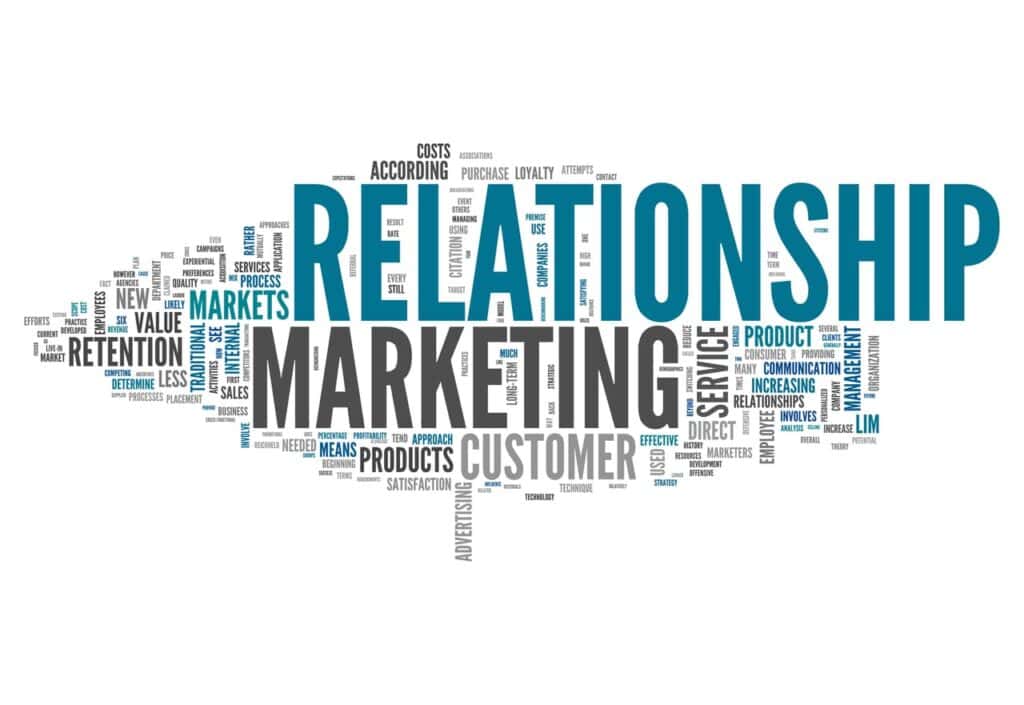How many times have you thought you nailed a sales pitch, only to see the customer walk away? How often have you wondered if there’s a missing ingredient in your sales approach?
In today’s changing field sales world, the old ‘one-size-fits-all‘ method doesn’t work anymore. In today’s market, understanding and adapting to diverse customer personalities is the golden ticket. But what does it entail? And why is it so pivotal?
The Pillars of Modern Field Sales
You’re at a bustling market. You see two stalls. One vendor screams about how his products are the best, while the other vendor observes you, understands your style and preference, and then pitches his products.
Who would you likely buy from? The second, right? That’s the power of understanding.
In sales, this analogy holds true. Recognizing the varied personalities and tailoring your approach isn’t just a “nice-to-have“; it’s the backbone of modern field sales. It provides a competitive edge, and here’s why:
- Personalized Experience: Customers cherish businesses that recognize their uniqueness and provide tailored experiences.
- Efficient Communication: Knowing a customer’s personality helps strike a chord with them more efficiently.
- Increased Trust: When you engage on a personal level, trust is established faster, isn’t it?
- Enhanced Customer Loyalty: By addressing a customer’s specific needs and preferences, they feel valued, leading to stronger brand loyalty.
- Reduced Sales Resistance: Tailored approaches break down barriers, reducing a customer’s natural resistance to sales pitches.
- Improved Feedback Loop: Understanding personalities means more meaningful conversations, leading to valuable feedback that can refine future strategies.
- Higher Conversion Rates: Customized sales strategies resonate better, often leading to higher conversion rates and sales figures.
- Predictable Buying Patterns: With a deeper understanding of personalities, sales representatives can better predict purchasing habits, allowing for a more proactive sales strategy.
How Customer Personalities Shape Purchase Decisions
Different strokes for different folks, as the saying goes. Everyone values different aspects of a product based on their personality traits.
- Analytical Minds: If you’re an analytical individual, numbers, data, and hard facts catch your eye. You need empirical evidence to be convinced. For you, a car’s miles-per-gallon ratio or its safety ratings can be the deal maker or breaker.
- The Expressive Souls: On the other hand, if you lean towards the expressive side, you’re likely swayed by compelling narratives, brand stories, or even aesthetics. The history behind a brand, the color palette of a product, or the emotions it evokes could be your deciding factors.
So, for salespeople and businesses, why is this understanding pivotal? Because recognizing these personality-driven purchasing behaviors allows you to tailor-fit your sales approach.
By grasping these nuances, you enhance the buying process and boost your odds of sealing the deal.
After all, isn’t the main aim to make every customer feel like the product was designed especially for them?
Importance of Adaptive Selling in Modern Times
Have you ever paused and marvelled at how uncannily precise today’s online advertisements are, almost as if they’ve eavesdropped on your conversations or peeked into your thoughts?
What you’re witnessing is the magic of adaptive marketing, a strategy that tunes into individual preferences to deliver hyper-targeted content.
Here’s the important question: Shouldn’t field sales tap into the same approach?
- Competing Today: In the current business environment, competition isn’t just about how many competitors there are; it’s about who can adapt quickly. Customers now expect businesses to anticipate their needs before they even express them.
- Tech as a Game-Changer: Thanks to technology advancements, especially artificial intelligence and data analytics, businesses have a wealth of customer insights. Field sales reps, armed with this information, can customize their pitches in real time to resonate with each potential client.
- From Transactional to Relational: Sales is now about building relationships. By demonstrating understanding, adapting, and evolving to meet the other party’s needs. Adaptive selling is essentially the art of building relationships in action.
In a world where customers are bombarded with options, standing out isn’t about shouting the loudest; it’s about speaking directly to the individual needs of each potential client.
And that’s what adaptive selling is all about – personalizing, refining, and optimizing your sales approach for each unique customer interaction.
Delving Into Customer Personality Types
Imagine organizing a dinner party for a diverse group of friends. You have Sarah who has a fiery palate and lives for spicy dishes, Jake with an insatiable sweet tooth, Hannah, a staunch vegan, and Max, a devout carnivore.
Now, replace these food preferences with sales approaches. Yes, just as every individual has their unique culinary taste, they also possess distinct preferences when it comes to being sold to. Let’s dissect this further.
- Drivers: You know those clients who seem to be perpetually in a rush? They thrive on efficiency and loathe dilly-dallying. Speed, clarity, and results steer their decisions.
- Analyticals: These customers are the thinkers. They need facts, figures, and a well-laid-out blueprint of the benefits. They’ll pore over details before taking the plunge.
- Expressives: These are the individuals swayed by narratives, aesthetics, and emotional connections. They buy experiences, not just products.
- Amiables: They gravitate towards genuine relationships, camaraderie, and mutual respect. In sales, they’re seeking trustworthiness and a personal connection.
- Adventurous: They love novelty and innovation. When selling to this group, highlighting unique features or offering something ‘new and exciting’ can be the ticket.
- Visionaries: These customers are driven by the potential and future benefits of a product or service. They’re not just buying for today; they’re investing in tomorrow.
- Pragmatists: These are the ones who always weigh the pros and cons, perhaps even maintaining a checklist or a pros-cons list. They’ll evaluate how a product or service fits into their day-to-day life and its immediate utility.
But the real challenge isn’t just knowing these personalities; it’s spotting them during early interactions.
So, how can sales reps tune their radar to quickly and effectively pinpoint these traits, ensuring a tailor-fit sales approach? The next chapter will shed light on this art of identification.
Behavioral Cues and Communication Preferences
Just as a tailored suit gives away hints about a person’s taste and preferences, behavioral cues, although not definitive, offer invaluable insights into a customer’s personality.
In the realm of field sales, decoding these cues is akin to having a roadmap – it guides your approach.
Spotting Behavioral Cues in Real-Time
- Body Language: Think about those who can’t help but tap their foot impatiently when they’re eager to move forward. This restless energy? It’s a Driver. On the flip side, notice someone lost in deep thought, meticulously pondering over every word you say? You’re likely dealing with an Analytical.
- Tone of Voice: Ever heard the unmistakable excitement in someone’s voice as they talk about a favorite movie or hobby? If you encounter such infectious enthusiasm in a sales scenario, you’re probably engaging with an Expressive.
- Decision-making Speed: Some customers seem to have an internal turbo button. They hear you out and are ready to decide. More often than not, these quick decision-makers are Drivers. On the other hand, Analyticals are the contemplative sort; they mull over details, ensuring they’re making the most informed choice.
- Eye Contact: Have you ever interacted with someone who maintains steady eye contact, exuding confidence and clarity in what they want? This direct gaze is often characteristic of a Driver who’s focused and knows exactly what they’re after. On the flip side, those who sporadically break eye contact, taking moments to reflect and process, might be leaning more towards the Analytical or Amiable side, wanting to ensure harmony or consider all details.
- Engagement in Conversation: Some customers actively engage, asking questions, seeking clarifications, or even challenging some points you make. This participative nature is typical of Expressives, who wish to connect and engage at a deeper level. On the other hand, Amiables might nod along, listening intently and seeking a harmonious interaction, even if they have reservations, which they might voice in a more gentle or roundabout manner.
Crafting Communication Based on Preferences
Remember that time you bought a new gadget, and instead of a handy quick-start guide, you were handed a hefty manual? Frustrating, wasn’t it? Similarly, communication mishaps in sales can lead to lost opportunities.
By grasping a customer’s communication style, you can serve them the “information meal” they truly relish.
- For the Visual Minds: There are those who digest information best when it’s presented visually. Charts, infographics, and visual aids are your best allies here. Think of them as the customers who’d prefer a comic book over a novel.
- The Talkative Folks: Some folks love in-person or phone chats. For them, a conversation isn’t just about what’s said, but also how it’s said, the breaks, and the feelings conveyed. These are your talk show enthusiasts who relish a good dialogue.
- Lovers of the Written Word: Then there are those who enjoy diving deep into written content. Whether it’s a detailed email or an in-depth report, they appreciate the ability to revisit information, analyze it, and mull over it at their own pace. Think of them as the ones who’d cherish a well-written novel over a movie.
Mastering the art of identifying behavioral cues and aligning communication accordingly isn’t just a strategy; it’s the key to unlocking deeper connections and more fruitful sales interactions.

Tailoring Sales Techniques for Each Personality
Just like a craftsman picks the right tool for each job, a salesperson should tailor their pitch to suit the customer’s personality. Let’s delve into some actionable techniques for each of these personalities.
1. Drivers: Laser-focused and Efficient
Begin meetings with a clear agenda. Address their primary concerns first, often centered around time, cost, and efficiency. Emphasize results, provide concise summaries, and always be prepared to get straight to the point.
2. Analyticals: Structured, Detailed, and Logical
Present comprehensive data sets, ROI calculations, and case studies. Use charts and graphs to visualize complex data. Anticipate questions they might ask and have detailed answers at the ready. Be patient as they dissect information and always be ready to provide references or sources.
3. Expressives: Engaging and Emotionally Resonant
Share anecdotes or success stories related to the product or service. Use vibrant visuals and interactive presentations. Show them the bigger picture – how your offering can make a difference in their world. Encourage them to share their own stories and connect them to your product’s benefits.
4. Amiables: Relational and Genuine
Begin conversations with personal check-ins or light anecdotes to create rapport. Demonstrate reliability and consistency in your interactions. Prioritize post-sale follow-ups to nurture and solidify the relationship. Listen more than you talk, showing genuine interest in their needs and concerns.
5. Adventurous: Fresh and Dynamic
Highlight the unique, new, or innovative features of your product. Use demos or trials to let them experience it firsthand. Stress the exclusivity or limited-time offers to tap into their spontaneous nature. Showcase customer testimonials that highlight novelty or excitement.
6. Visionaries: Future-oriented and Aspirational
Discuss the long-term benefits and potential of your product or service. Use forward-looking statements and show how your offering can evolve or adapt with them over time. Paint a picture of a brighter future with your product in it.
7. Pragmatists: Practical and Straightforward
Demonstrate the immediate utility of the product. Use real-world scenarios or examples to showcase its practicality. Offer comparisons with other products to highlight the benefits and efficiencies. Perhaps provide them with a checklist highlighting how your product meets their pragmatic criteria.
Final Thoughts | Elevating Your Sales Game Beyond the Generic Pitch
In field sales, knowing each customer’s personality is key.
Generic sales pitches just don’t work anymore. To truly connect and resonate, sales reps need to be keen observers, picking up on each prospect’s unique cues and preferences.
By adjusting our strategies for these distinct personalities – whether it’s the detail-oriented Analytical or the passionate Expressive – we not only enhance the sales conversation but also build stronger connections and trust.
So, as field sales professionals, let’s commit to moving beyond generic approaches.
Unlock a world where adapting to customer personalities is made seamless. Invest in top-notch field sales software now and ensure you’re not just in the game but leading it.


















